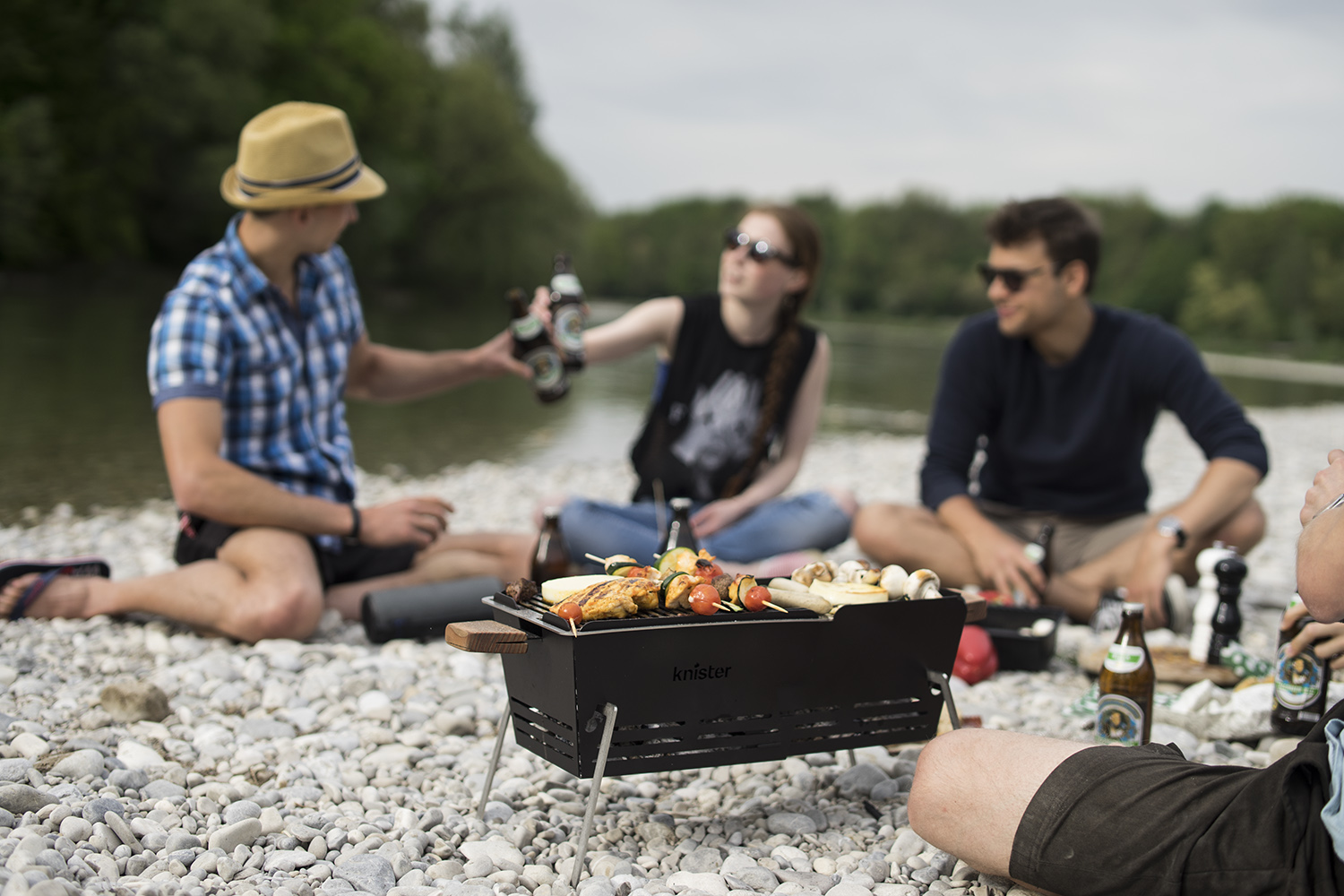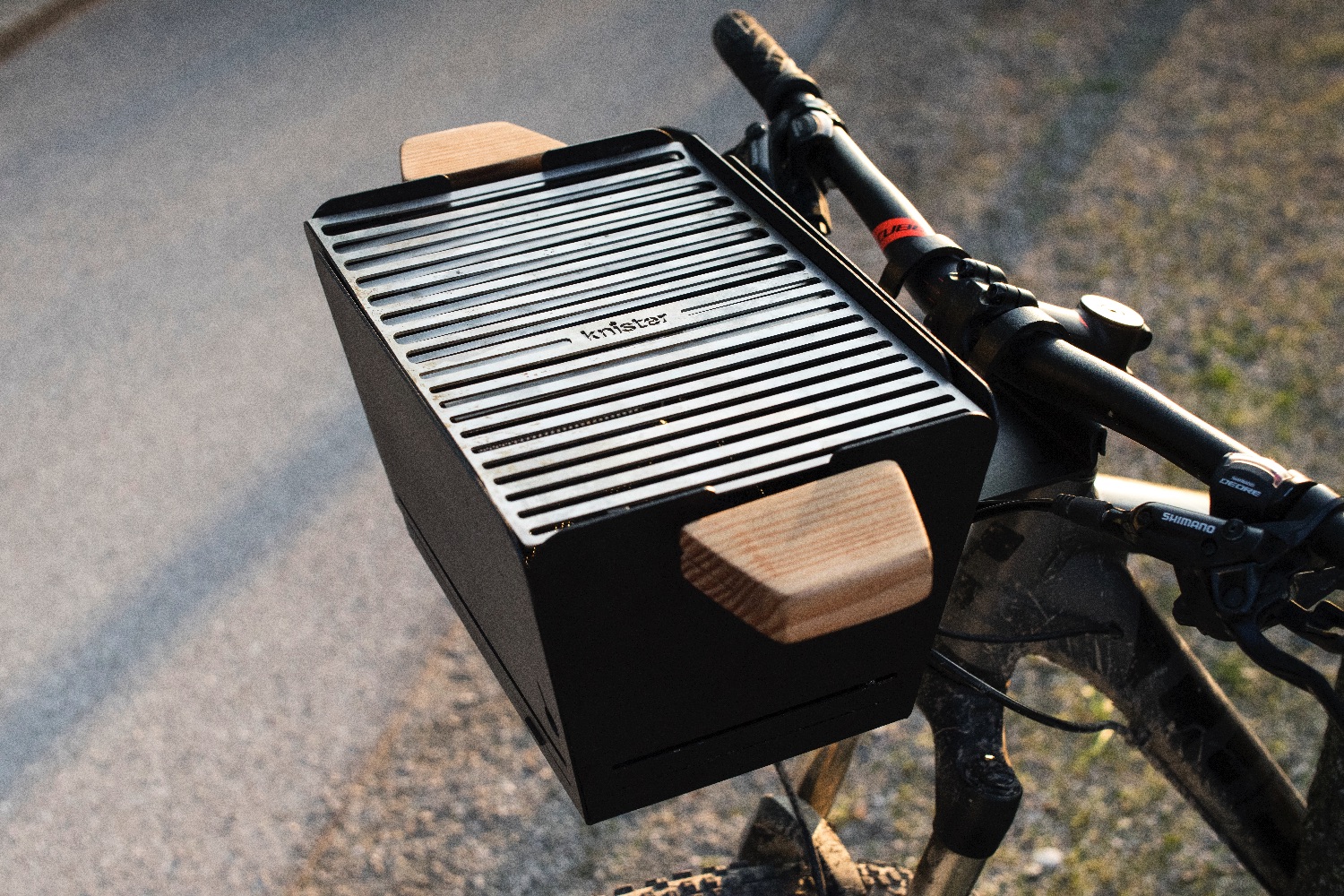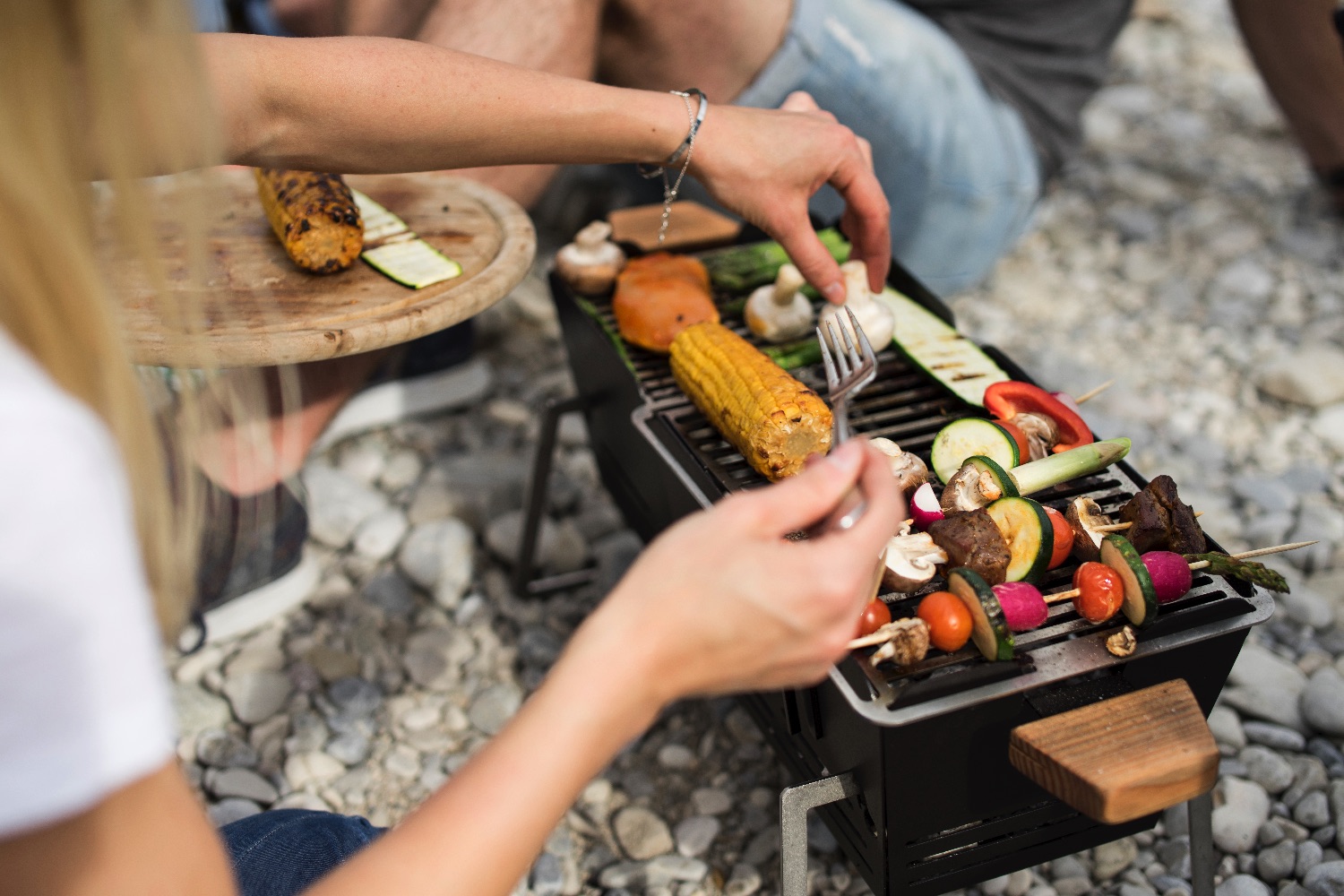The good weather’s here — and with it, barbecue season. But too often barbecuing is limited to our backyards or nearby parks. The reason? Because barbecues aren’t exactly the easiest of thing to transport. That’s especially true if you’re also someone who enjoys spending a sunny day on their bike, since transporting a grill on a bike is downright impossible. Or, at least it was, prior to a cool new Kickstarter campaign.
Created by German entrepreneur Carolin Kunert, the Knister Grill is a handlebar-mounted barbecue which lets you easily transport grill, charcoal, food and utensils by pedal power. Simply hook it to the handlebars of your bike (a process which requires no screws and works with all common handlebars), then just remove it when you arrive, and extend it to twice its traveling size for grilling. Simple!
“I first developed a transportable barbecue in the third semester of my industrial design studies in Munich,” Kunert told Digital Trends. “Back then, it was super-heavy and mounted on the bike rack — I wasn’t able to use it because I had a basket on my bike. In November 2017, during my Erasmus semester, I continued the project intensively, won the competition ‘Startup Weekend,’ and created the first prototypes. I created a team behind Knister Grill and developed the product to get it into serial production.”
According to the Kickstarter campaign, the Knister only takes a few minutes to cool down after use, before you can reattach it to your bike and begin the cycle home. The clever design even stops dust or coal remnants from flying in your face as you cycle, due to the way that the barbecue closes with the two grills sliding over one another.
“There are [already] small, high-end camping products and transportable barbecues on the market,” Kunert continued. “We don’t exactly compete with them. We offer a lifestyle product, where the spontaneous ‘barbecue-with-friends’ is the most important thing.”
With all crowdfunding campaigns, we advise that you’re aware of the risks involved with pledging your hard-earned cash. If you do want to get involved, however, head over to the Knister Grill project page on Kickstarter. A small Knister Grill will set you back 69 euros ($81), while a regular size one starts at 115 euros ($135). Shipping is set to take place in July, which still gives you a few months of summer to take advantage of it.







